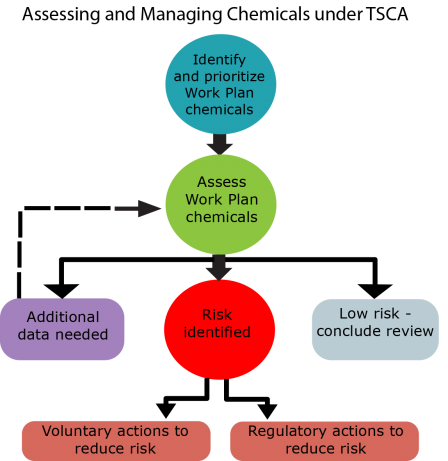Formaldehyde is one of the most studied, and regulated, chemical substances in commerce today. For decades, this substance has been continuously studied to help ensure regulated safe exposure levels for formaldehyde are protective.
Formaldehyde is almost exclusively used as a chemical intermediate, meaning it is manufactured and then converted into another chemical in subsequent steps to ultimately generate the final product. This means little (if any) formaldehyde remains in the final products that consumers use.
Because of formaldehyde's unique physical and chemical properties, few substances can replace it as a raw material without reducing performance and making the final products more expensive. Whether it's used in plywood for home construction, fuel system components for automobiles, or door and window insulation for modern airliners, formaldehyde products provide greater utility for consumers in the form of extended use, consistent quality, and improved performance and safety.
When a chemistry -- such as formaldehyde -- is used in commerce, the U.S. Environmental Protection Agency (EPA) has the authority to evaluate potential risks from the use of the chemical and address any unreasonable risks it may present to human health or the environment. This is where the amended Toxic Substances Control Act (TSCA) comes in. TSCA provides the framework to assess and evaluate chemical risks that have not been subject to regulation by other statutes.
On December 20th, EPA finalized the designation
of the next batch of chemical substances for risk evaluation under TSCA. This
announcement initiates a TSCA risk evaluation of formaldehyde, but it is
important to note that – as EPA has said – designation of a substance as a high
priority for evaluation “does not constitute a finding of risk” and should not
be cause for concern. As noted above, in the case of formaldehyde, most uses
and potential risks have been evaluated and regulated where necessary. Within
the next three and a half years, EPA must complete the risk evaluation of
formaldehyde, as well as for the other selected chemicals. During this time
period, industry, members of the public, and other stakeholders will have the
opportunity to provide the agency with information that can aid in its
regulatory evaluation.
The EPA process. A review does not mean a compound is harmful, reviews are done periodically as well. Credit: EPA
Given formaldehyde’s wide use, extensive product stewardship
efforts have been implemented, including state-of-the-art scientific research, over
the past 30 years to better understand and characterize any potential health
effects associated with formaldehyde. Multiple
epidemiological, animal, and mode of action (MOA) studies have been conducted
over a long period of time. While the epidemiological and animal studies focus
on the identification of health effects that may be associated with
formaldehyde exposure, the MOA research focuses specifically on trying to
understand how formaldehyde exposure could result in the development of a
specific health effect and whether it is biologically feasible. Consideration
of MOA data is critical to understanding how inhalation of formaldehyde may
impact normal physical processes.
Why review it again?
So with years of scientific study, hundreds of peer-reviewed studies, and millions of dollars spent in conducting and communicating scientific research, why is this TSCA risk evaluation, and reviewing the MOA research, so important?
Consideration of MOA data, particularly for a chemical like formaldehyde where it has been robustly developed, is key to conducting an accurate and valid risk evaluation that ensures that recommendations for acceptable exposures to formaldehyde are not below those levels normally present in the body. (Humans produce about 1.5 ounces of formaldehyde a day as a normal part of our metabolism.) It will also ensure those recommendations are consistent with our understanding of how health effects may occur following exposure to formaldehyde.
TSCA requires the use of the best available science, meaning that information must be of the highest quality in order to be included in the review. This type of evidence includes information on the hazard and exposure potential of the chemical substance; persistence and bioaccumulation; potentially exposed or susceptible subpopulations; the conditions of use or significant changes in the conditions of use of the chemical substance; and the volume or significant changes in the volume of the chemical substance manufactured or processed.
Consumers need confidence in environmental regulations and these reviews do that.
Even though formaldehyde is
already highly regulated by a number of agencies and exposures are well
managed, it is understandable that consumers may still have questions,
especially when it comes to the safety of the products they use. Scrutiny of
formaldehyde use continues and the public should have confidence that EPA is required
to use the most relevant, best available science to make decisions. In
particular for formaldehyde, this means a MOA framework approach should drive
the hazard and dose-response characterization components of the risk
evaluation. This is important so that poor-quality science doesn’t lead to
unfounded public alarm and unnecessary costs for consumers and businesses.
That’s why TSCA is essential to ensuring protection of human health and the environment. Formaldehyde’s review under the TSCA process will hopefully reassure workers and consumers that uses of formaldehyde chemistry are appropriately evaluated and managed using transparent, science-based standards and consider the best-available science to draw conclusions.
Importantly, federal standards and regulations have been in
place for decades to control formaldehyde emissions and minimize human health
risks, including, for example, EPA’s regulations under TSCA Title VI,
Formaldehyde Standards for Composite Wood Products, the most stringent
formaldehyde product emissions standard in the world today. See more
examples of existing U.S. standards and regulations here.
On the global
front, formaldehyde has been researched extensively to scientifically support standards
and safeguards and the European Union is in the final stages of a formaldehyde
evaluation that was conducted in a similar manner to what is being done in the
US.





Comments